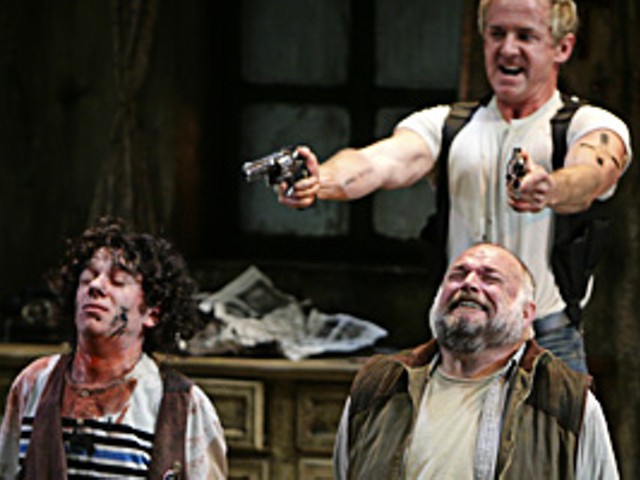Riverfront Times: What are the benefits of having already directed the play before you came to St. Louis?
Stuart Carden: With new plays you don't always know that the text is solid. Quite often a director has to fix some holes or some storytelling issues. But I learned from having directed this play before that this text is absolutely reliable, and it's up to us to trust what McDonagh has written. There's no fixing to do. It's just telling the story as well as you can. So whenever there's self-doubt — and in an artistic process there are always moments of self-doubt — I think back to the fact that the play is so exquisitely well written. It's as tightly constructed as a Feydeau farce.
The other thing, on a technical level, is that I learned a tremendous amount about how to make these effects work. The previous production was a nice trial run for some pretty astonishing special effects. We learned a lot about how to light those special effects, how to execute them, how much is enough and how much is too much.
Was special-effects designer Steve Tolin part of the package when you agreed to direct the play again in St. Louis?
There is no way I could do this play without Steve Tolin. These special effects provide a visual climax to the storytelling, and if you don't get them right, then all your work is for naught. Steve and I talked for a year before the Pittsburgh production about how we could incorporate the effects in the show. Now we've had another year to further that conversation based on the previous experience.
Did he have to put as much time into this production as he did the first one?
Very early on in a production meeting, Steve said, "I would like to be there for the whole rehearsal process." And [Rep artistic director] Steve Woolf immediately said, "OK, we can make that happen." He has put in hundreds and hundreds of man-hours to pull these effects off.
If you were to meet Martin McDonagh, what's the first thing you would ask him?
I would want to know if it's true that he wrote all seven of his plays in a six-month period. The legend, which he has helped to perpetuate, is that at age 23, and without any training, from supposedly just watching Australian soap operas, he wrote these plays.
Even though you directed this play once before, can you predict what the audience response will be?
No. And I'm really interested to see how this production is different from the last one. The core approach is very similar. But it is different. Then add to that the question mark of St. Louis audiences. This is my first time here. But I have a feeling that if we're telling our story the way we should be telling it, most viewers will respond to the piece as I think it's meant to be taken, which is as a satire. Even though this is a very violent play, I think its ultimate message is anti-violence because it shows us how an ideal can become perverted. And how an ideal, when taken too far, can become just as grotesque as the wrong it's trying to right. So if we're telling the story correctly, I think audiences will be able to understand McDonagh's intent. To me, that intent is comedy.





